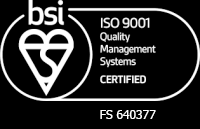Successful business improvement strategies should incorporate a series of effective methods for improving business processes and creating competitive advantage. This will help identify all tangible and intangible benefits of each business process, and how to improve all internal activities.
From responding to customer demands, to improving production standards and achieving your business goals more efficiently, at Brook we understand the importance of implementing new business process strategies to drive growth.
Want to learn more on how to improve your business strategy with efficient processes? Get in touch with our business consultants!
How to Implement Process Improvement Strategies
It can be hard profitability increases and return on investment (ROI) benefits resulting from the implementation of the new improvement strategies.
For this reason, businesses should always follow a logical planning process, based on four important steps: Defining, Improving, Deploying, and Maintaining.
Brook’s business strategy & improvement experts have identified the 7 processes that can drive improvement and deliver powerful results.
1. Define Your Business Processes
Different businesses have different needs. Before getting started, it is essential to identify what changes are required, their complexity and consequences for the organisation and its staff.
Process maps are useful tools that can help define the strongest and the weakest business processes and determine how to improve them.
At Brook, we have developed our own “Strategic Compass” methodology, which help our consultants work closely with businesses to identify opportunities and threats in the light of both internal factors and the external environments. We have even tested this business strategy methodology on ourselves to analyse the benefits of the ISO Quality Management systems on businesses.
2. Set Benchmarks
Before they can surpass their competitors, businesses should be able to regularly outperform themselves. It is crucial to always set benchmarks before implementing a new business process strategy. This not only establishes realistic performance expectations, but also helps determine the status of the strategy and the progress towards the goals at any time.
When setting benchmarks for your new business improvement strategy, flowcharts and similar techniques are critical for mapping out the process. To be successful, this must include even the most minuscule steps of the process and don’t forget to consider the responsibility of each of the parties involved.
3. Ensure Key Stakeholder Engagement
The success of any business initiative will be determined by whether it is supported by your business culture. Many new business strategies require change to drive growth, and they should be welcomed by at least your key stakeholders.
Senior management and key stakeholders should be involved right from the start: if they don’t openly support your new business initiative, no one else in the organisation will.
Strong leaders can influence your staff positively. For this reason, at Brook Corporate Development we offer bespoke leadership & management training courses in the North of England.
4. Improve the Customer Experience
Improving the customer experience may sound like an obvious step to boost your business performance, but research shows that several organisations still fail to align their internal processes to deliver better customer outcomes.
You can learn a lot by studying your customers, identifying a buying persona and even how your target audience interact with other businesses operating in the same industry. This will not only make your sales and marketing teams immediately more efficient, but also help identify the best business improvement processes to drive growth.
5. Expand your Markets
One of the most important business strategies to drive growth for many organisations is to increase sales if existing products or services. However, you first need to understand which markets are the best to target.
Market penetration consists in expanding one product or services on existing markets, and therefore increase your market share. The ultimate aim is to attract customers away from your competitors, making sure they choose you based on a significant price decrease, a dedicated option or a product refinement.
On the other hand, the recent pandemics has led many organisations to invest into market development, which translates into expanding a product or service on previously unexplored markets. This business strategy involves an analysis of new markets, their growth and potential, as well as the different customer segments.
Both business strategies can drive significant growth, but require detailed planning and analysis, as well as the commitment of all your involved teams.
6. Improve Resource Productivity
All the assets acquired by your organisation have the purpose of generating profits. These assets include people, tools, equipment, facilities, intellectual property, and information technology. While many organisations invest time and funds into ensuring to acquire the right assets, only few consistently measure the extent to those serve their intended purpose.
Once you’ve understood which assets produce the most value, you can analyse the time and activities behind each of them. The following step would be reducing non-value-added tasks and time and reduce cycle times.
Successful Lean Manufacturing techniques can boost your business operations and quality standards, while eliminating non-value-added activities.
7. Establish Consistent Best Practice
Your organisation relies on your employee’s abilities to get on board with the new strategy. They must not only understand the strategy goals, but also be committed to implement any required best practice agreed upon program.
Regular feedback of employees on current procedures is also essential to immediately identify any procedure causing delays or find new methodologies to speed up the business improvement.
Need help with your Business Improvement Strategy?
If you are looking for the perfect business strategy, tailored to your organisations needs and designed to improve your internal processes and drive growth, Brook Corporate Development can help.
Contact us today to learn how our business consultant can help you.





